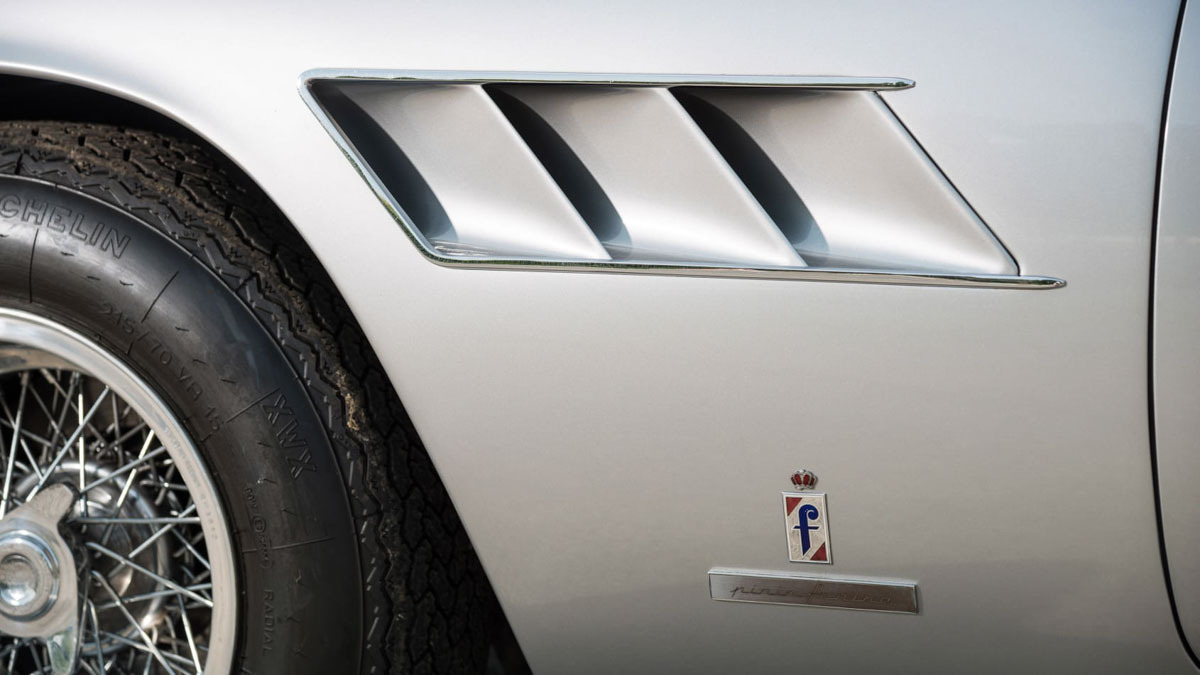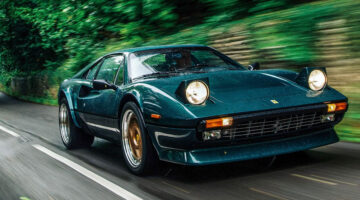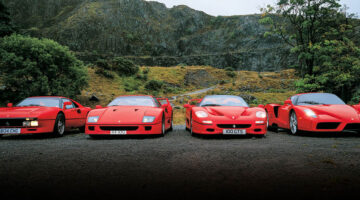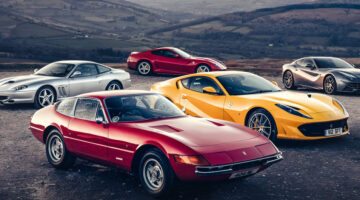The 812 Superfast takes its name from this ultra-rare ’60s super-GT. We drive the sublime 500 Superfast
This is an haute couture Ferrari. It’s the most glamorous of Ferraris, a Ferrari for the super-rich, a Ferrari for those who occupy other worlds from almost all of the rest of us. Back in the mid-60s, owners included the Shah of Iran (who bought two), actor Peter Sellers, the Aga Khan, and Prince Bernhard of the Netherlands. When new, the 500 Superfast was described as a ‘four-wheeled five-star hotel’ or the Royale Ferrari.
You get no real indication of this, nor of the Superfast’s potentially glamorous clientele, from a period brochure. In an official 1965-66 leaflet produced for UK importer Maranello Concessionaires, the 500 Superfast earns the final page in a simple, six-sided, fold-out sheet. These days you’d be extraordinarily happy to own any one of the four models listed in this unflashy, sparingly illustrated black- and-white document, the quartet including the 275 GT Spyder, the 275 GT Berlinetta and the 330 GT 2+2 besides the Superfast.
> Ferrari F40 vs 288 GTO – turbocharged icons go head-to-head
Rather unhelpfully, no prices are detailed, but even Ferrari’s own official website tells us that the 500 Superfast cost the equivalent of two Rolls-Royces – or 24 BMC Minis – with change.
You’ll pay a lot more than the price of two $447,816 Phantom Coupés for a 500 Superfast today, the car you see here worth upwards of $2.5 million, its value heightened by the fact that Ferrari made only 37, that it was the last low-volume model offered by Maranello and because this particular specimen is all original and unrestored.
Not that you’d think that when you inspect it. It doesn’t look absolutely new, but it carries very few flaws, making the absence of a rebuild truly remarkable considering that it’s over half a century old. Lifting the bonnet reveals an air cleaner faintly sheened with oil, while, inside the cabin, the lush red leather of the driver’s seat is slightly faded with age. Authenticity like this is good to see when so many cars are over-restored.
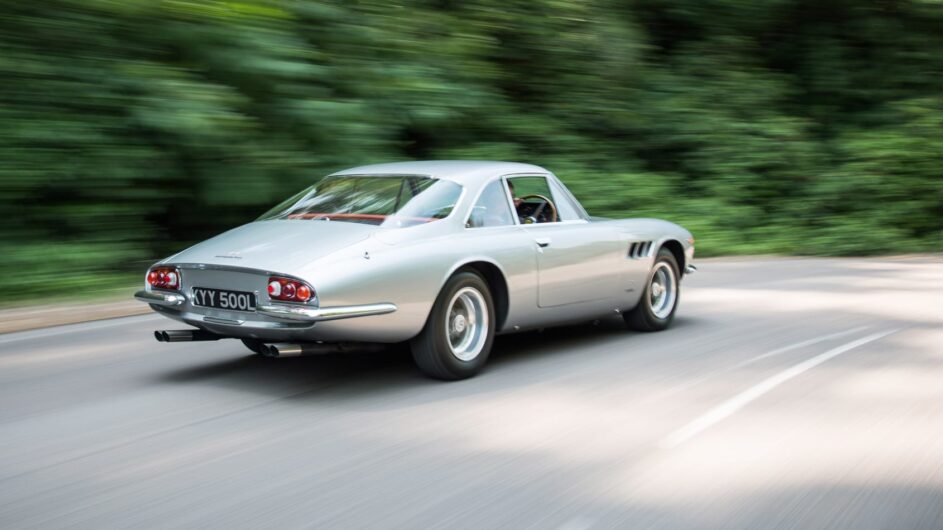
You’re unlikely to home straight in on these details unless you’re very familiar with the 500 Superfast, because the silhouette of the car is impossible to resist admiring. There’s elegant, crouching beauty here, the gentle angle of the wraparound rear screen almost unaltered at the point where it meets the rear deck, which carries the subtlest of billows as it descends towards the abrupt cut of this Ferrari’s recessed Kamm tail. This is sculpture that really does look superfast, even if the slender nose and its modest ellipse of an air intake do little to shout about this car’s muscle. The Superfast buyer would doubtless like it that way, their personal power, wealth and magnetism requiring no shouting at all.
But the Superfast certainly was, and is, powerful. Owners would have sat behind a speedometer marked to 290kph, and a 394bhp 5-litre V12 allegedly capable of swivelling the speedo needle almost all the way, to 280kph. Back in 1964, when the Superfast was launched, that was seriously rapid, and a good 30kph faster than Jaguar’s (in)famously massaged 240kph E-type. Still, you could have bought five Es for this money back then, and they would have been vastly more common. What you got with the 500 Superfast was a semi-bespoke car; even its V12 engine was unique to the model.
> Aston Martin Bulldog: the story of Aston’s first hypercar
This engine combined the so-called long block of the 1950 V12 designed by Aurelio Lampredi (and its 108mm bore centres) with the cylinder heads from the later, short-block Gioacchino Colombo V12, Colombo himself designing this variation. The 4962cc capacity was denoted by the ‘500’ (for five litres) in the Superfast’s name. The heads had hemispherical combustion chambers and carried a single camshaft per bank, while a trio of Weber carburettors and twin coils provided mixture and ignition. The official peak power figure, probably optimistic, was 394bhp at 6500rpm, with peak torque of 351lb ft arriving at 4750rpm.
Most of the first 25 cars had four-speed gearboxes, a fifth ratio provided by a switchable overdrive on fourth, the final 12 Superfasts gaining a conventional five-speed transmission. The disc brakes were from Dunlop, the wheels rather beautiful knock-off Borrani wire-sprung alloys. The Superfast’s structure consisted of a tubular steel chassis that was largely the same as that used by the 400 Superamerica coupé that preceded it, even down to the sharing of the same 2650mm wheelbase, its exterior panels fabricated from steel.
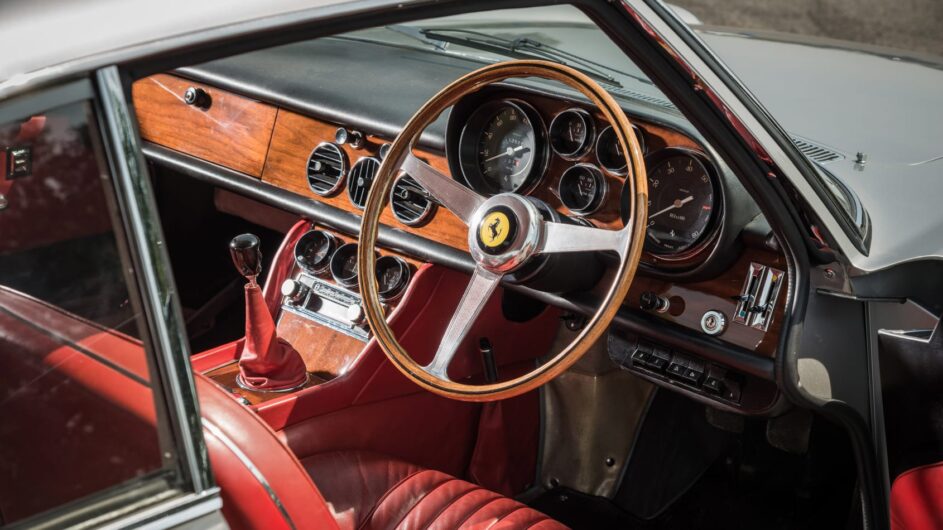
In fact, the 500 Superfast was the final evolution of a series of super-luxury Ferraris that emerged in 1955 with the first of three runs of Superamerica models, built at the rate of not much more than one a month. Even less in the following years, ’56 and ’57 producing a modest crop of five. These and all subsequent models were bodied by Pininfarina, by then Ferrari’s preferred carrozzeria.
The first Superamericas were quite formal coupés and spyders, with square shoulders and wraparound windscreens, but in 1960 Pininfarina produced a concept for the Turin show that was almost shockingly aerodynamic, what with its pop-up headlights, part-enclosed rear wheels and tapering tail. The Pininfarina Aerodinamica was a dramatic contrast to the earlier Superamerica and would undergo a variety of exploratory modifications before appearing as the 400 Superamerica production model. And it’s this shape that can clearly be seen as the genesis of the 500 Superfast.
The 400 evolved in production, too, its wheelbase growing from 2420mm to 2460mm in 1962, but it continued to be built in tiny numbers: a mere 19 had been produced by the end of 1963. Detail variations were considerable, some having Plexiglass headlight covers and air extractors for the rear brakes, with an assortment of front grille and bonnet treatments. One even became a prototype for the GTO, experiments with this six-carburettor Testa Rossa-engined car uncovering high-speed stability problems. Among the buyers of these rarefied models were several counts, William Harrah of the famous American Harrah Collection, a Bloomingdale and a Rockefeller.
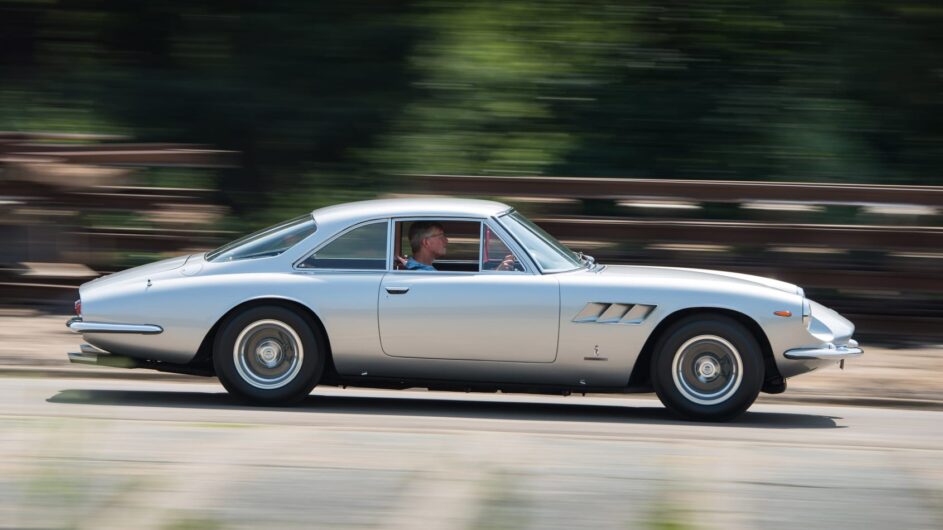
The final 400 Superamerica emerged in January 1964, the 500 Superfast debuting at the Geneva show two months later. It was clearly an evolution of its predecessor, although there were plenty of differences, the most obvious of these the aerodynamic Kamm cut to the tapered tail. The car looked cleaner, too, the moulding along its flanks deleted, its front wing air extractors remodelled and its Borrani wires enlarged to carry 205 x 15 tyres. Also new was the previously mentioned hybrid of short- and long-block V12s, but mechanically the car was otherwise the same, suspension included. That consisted of coil-sprung double wishbones and an anti-roll bar up front, and, rather more crudely, a semi-elliptic leaf-sprung live axle at the rear, although this was further reined in by a pair of radius arms.
There were more changes inside, the 400’s rather shapely instrument nacelles replaced by a wood-fronted dash and instrument binnacle that did much to underline the 500’s super-luxury GT ambitions, even if the wood was less distinguished than the timber you’d find in a contemporary Triumph Herald. The console was lengthened, a wonderfully squidgy centre armrest provided elbow support, and the trio of minor gauges was angled towards the driver. Air- conditioning was an option, as were rear seats in place of a trimmed luggage deck.
Rear seats were fitted to this car in fact, by the factory when it was new. Ferrari 500 Superfast serial number 6659 SF was delivered new in February 1966 to one Sir Eric Miller, who paid $14,766 for it. Although a Series 1 model, of which 25 were made, this car was fitted with the five-speed gearbox of the Series 2, as well as the trio of front wing air-vents rather than the 11 angled slits that had previously ventilated the engine bay. Miller had a chequered, property-developing career, and following his death in 1977 the car was stored in the UK before becoming part of the Pat Burke Modena Collection in Australia. It returned to Britain in 2002, at which point it had accumulated only 8000 kilometres. Since then it has changed hands several times, its kilometres remaining very low at 21,500 kilometres, part-enabling it to win a Ferrari Owners’ Club National Concours award for its originality, as well as its class in the 2015 Cartier Style et Luxe at the Goodwood Festival of Speed.
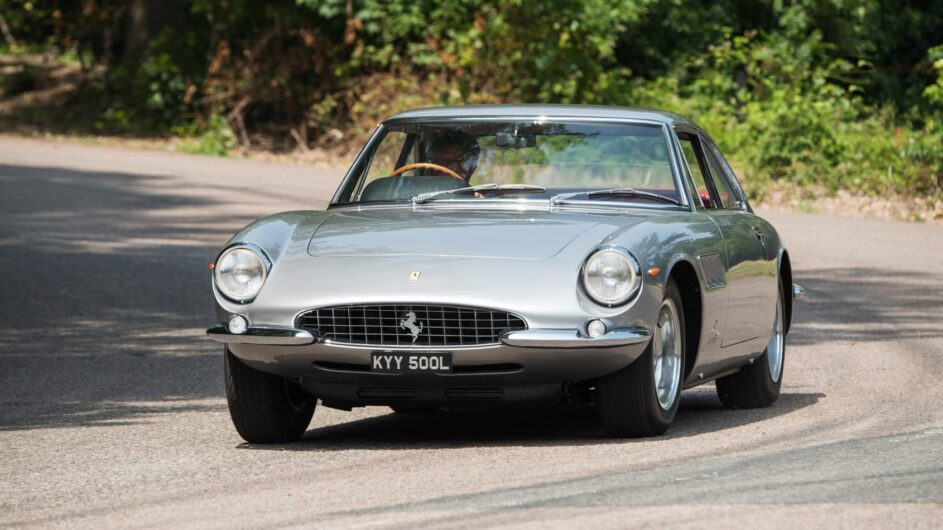
Such judgings doubtless avoided testing those rear seats, which would be quite comfortable were it not for the fast roofline forcing an uncomfortably cricked neck. So these are for smallish kids only. Not that this matters, the Superfast’s seductive silhouette triggering thoughts of romantic weekends away at some of the most luxurious hotels on Earth, the rear seats best used for ribbon-wrapped extravagances.
Get behind the big, wood-rimmed wheel and you face a dashboard that seems so uncomplicated by today’s standards, and many will celebrate such simplicity. Despite this, the refined luxury of the Superfast gradually surfaces, first with your sumptuous occupancy of the pleated leather seat, followed by your realisation that the steering wheel’s alloy spokes are subtly and intricately engraved. Poke about and you’ll find electric front windows – still a major novelty on European cars at this point – beautifully trimmed, spring-back door pockets, a pleated headlining (in vinyl, surprisingly) and a footrest for a potentially terrified front passenger. There’s no shortage of instruments either but what’s missing, curiously, is a means of pulling the door shut. Perhaps that was a valet’s task.
The driving position is pretty good for a car of this era, especially for a model born in left-hand-drive form. The steering column is only slightly offset to the left, the pendant pedals hanging towards the right-hand side of the footwell but not inconveniently so. The large, highly veneered wheel is quite a handful at first, but there are plenty of classics with heavier steering at parking speeds.
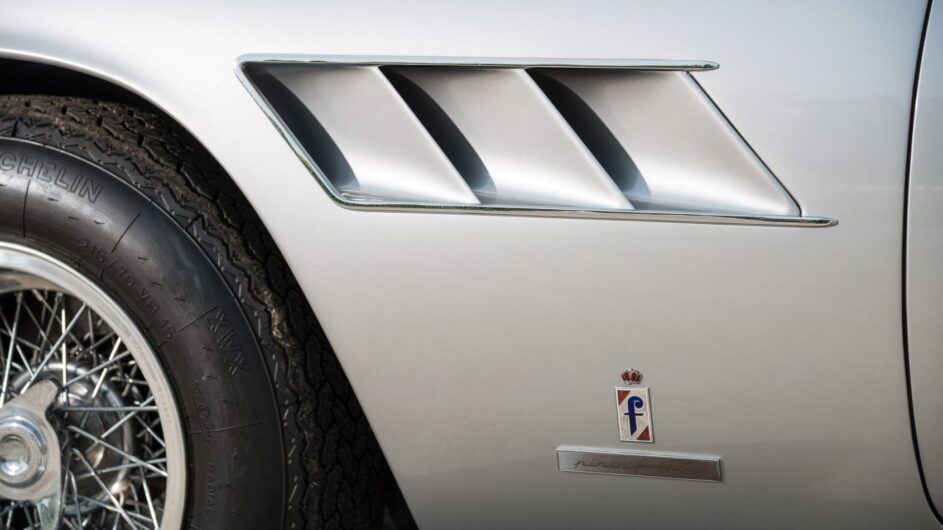
You might expect a 5-litre V12 to be a stout engine of measured revving, even if it’s fuelled by a trio of Webers. But this is a Ferrari V12, and it spins up with an ease and lightness that’s quite a contrast to the steering’s low-speed heft and the machine- tool movement of the gearchange. It also has a throttle of precision, making heel-and-toe changes a pleasure that also eases the lever on its way.
The V12 obviously revs more slowly when it’s actually propelling the Superfast, its thrust assertive rather than horizon-ripping. Prudence keeps the rev-counter needle well away from the 6500rpm red line, middling revs nevertheless hinting at the welling energy that a deep-throttle sortie towards the 4750rpm torque peak would release. This is an engine designed to give its best in the top third of its rev- range, driving it that way presumably undamming the power to allow the Superfast to dominate a road.
Especially if it’s straight. Or mostly composed of long sweepers. Tighter bends are probably more of a challenge, even at pretty modest speeds, when it’s easy to feel, and see, the Superfast’s line altering as you tease the throttle. Add more pre-bend pace and the 500 soon starts to feel rather large, heavy and momentum-propelled, sometimes undesirably so. Its big wheel needs big movements and quite big effort, and there’s roll, too. Get used to it, though, and you can see how a bend-filled mountain road would allow you to build a very satisfying rhythm while simultaneously enjoying a light workout. And if you’re bold enough you could probably use its trajectory-altering throttle to very useful and exhilarating effect.
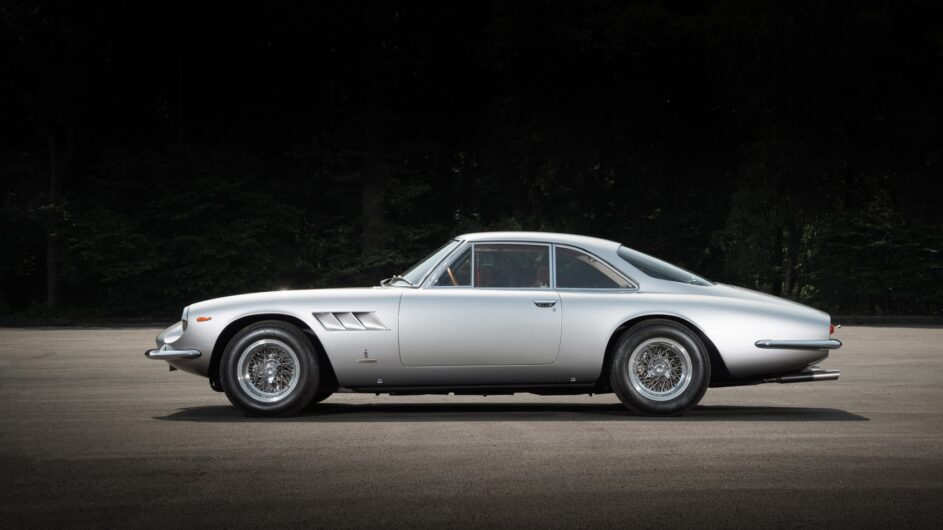
That said, 500 Superfast chat on forums – there’s not a lot, as you’d expect, but it’s illuminating – suggests that there are challenges ahead if you want to make the most of the 394 horsepower while traversing the Alpes Maritimes. Although the brakes on this particular car respond well to a finely weighted pedal, owners report that stopping a Superfast from high speeds can be a decidedly palpitatory experience. They also suggest that it feels too heavy and too powerful to be a car that the keen driver can relax into. kilometre and familiarity might change that, and indeed be part of the pleasure of getting to know this beautiful car, but a steroidal 275 GTB in evening dress it is not.
That doesn’t diminish its power to arrest your eye with its beauty, to tempt you with its power and to challenge you with its particular flavour of agility. The 500 Superfast name, the glamorous roll-call of owners and the sheer rarity only add to its allure. This is a rich if flawed Ferrari, but it’s no less compelling for that.
Specification
| Engine | V12, 4962cc |
| Max power | 394bhp @ 6500rpm |
| Max torque | 351lb ft @ 4750rpm |
| Transmission | Five-speed manual, rear- wheel drive |
| Tyres | 205 x15 radial |
| Weight | 1397kg |
| Power to weight | 286bhp/ton |
| 0-100kph | c6.0sec |
| Top speed | 273kph (claimed) |
| Price new | $14,766 in 1966 ($263,000 in today’s money) |
| Value today | $2.5 million+ |
This article originally appeared at evo.co.uk
Copyright © evo UK, Dennis Publishing

